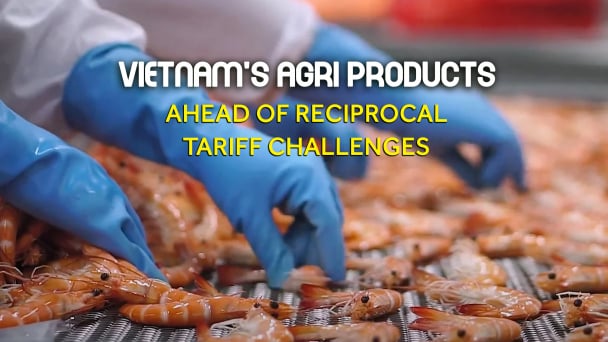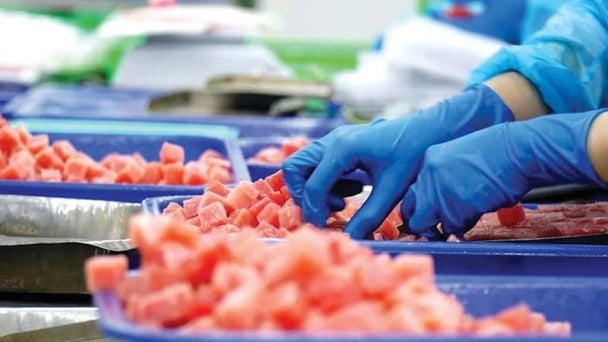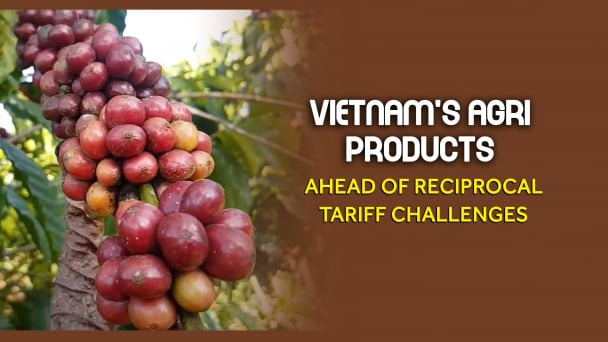May 30, 2025 | 00:34 GMT +7
May 30, 2025 | 00:34 GMT +7
Hotline: 0913.378.918
May 30, 2025 | 00:34 GMT +7
Hotline: 0913.378.918

The Ministry of Industry and Trade requested to closely monitor developments in the domestic and world rice markets to ensure food security and rice export efficiency.
The Ministry of Industry and Trade has made a request to the Directorate of Market Surveillance, demanding that local market surveillance forces enhance their cooperation with relevant agencies in their respective areas. The objective is to closely monitor the price of rice while also intensifying the examination and regulation of business companies, wholesale and retail power sources, markets, supermarkets, commercial centers, and inventories. This is aimed at effectively managing the supply and selling prices of rice products, as well as preventing any instances of price manipulation, hoarding, or unjustifiably high pricing.
The primary responsibility for overseeing and coordinating various entities involved in foreign trade, such as the Ministry of Agriculture and Rural Development, the Ministry of Finance, the Vietnam Food Association (VFA), the Departments of Foreign Markets, trade deals, and Vietnamese trade branches in other countries and territories, lies with the Agency of Foreign Trade. Its main task is to closely monitor global developments in the rice market while also coordinating efforts to track rice production, supply, and demand dynamics, domestic and market prices of rice, and providing recommendations and solutions to enhance rice export management in the current context.
The Asia-Africa Market Department is responsible for overseeing Vietnam's international trade activities, particularly in relation to monitoring market conditions, trends, regulations, and policies pertaining to the export and import of rice in the respective host countries. Publish essential information on the official website of the Ministry of Industry and Trade and promptly inform the Agency of Foreign Trade as well as other appropriate agencies and entities to ensure efficient coordination and execution of regulatory, administrative, and supportive tasks.
The Vietnam trade deal in the host country plays a significant role in monitoring and disseminating information pertaining to rice production and export markets, specifically in countries such as India, Thailand, Pakistan, Cambodia, and the United States. This includes providing updates on production seasons, rice consumption in the local market, export conditions, and policy developments related to the unpredictable global food market. Additionally, the trade deal facilitates the regular or irregular provision of information regarding the Agency of Foreign Trade and the Departments of Foreign Markets.
The VFA continually monitors the global rice market, predicts import demand in various markets, and keeps track of developments in the domestic market such as paddy prices, domestic rice prices, and rice inventories. It actively collaborates with the relevant units of the Ministry of Industry and Trade to propose measures that effectively ensure food security in rice exports.

Harvesting rice in the Dong Thap Muoi area.
In the 2021-2025 period, the National Assembly promulgates Resolution No. 39/2021/QH15 on national land use planning for 2021-2030, with a vision for 2050. The resolution sets a target to reduce the area for rice cultivation to about 3.5 million ha by 2030. In addition, the solution allows flexibly changing the structure of crops and livestock within 300,000 ha of rice land, but without changing the nature and conditions of land use for rice cultivation. This enables farmers to switch back to rice farming when necessary, and restrict and control the conversion of rice land to non-agricultural land, especially industrial zone land.
In a report sent to the National Assembly, MARD Minister Le Minh Hoan said that the Ministry of Natural Resources and Environment (MONRE) is responsible before the Government for unified land management. According to Decision No. 387/QD-BTNMT (dated March 2, 2022) of MONRE, the country’s rice land area is nearly 4 million hectares.
Regarding production, with the average output of the past years, Vietnam consistently reaches and exceeds the threshold of 43 million tons of rice per year. Data shows the domestic demand for rice is about 24 million tons, including national reserve, breeding, processing, and production of animal food sources. To guarantee a high safety level, MARD confirms that the amount of rice to ensure food security for 100 million people and other domestic consumption needs is about 29.5 million rice tons per year. Thus, there are about 13.5 million tons of surplus rice, allowing the export of 7-8 million tons.
Besides rice, Vietnam annually produces an average of more than 7 million tons of meat, 10 million tons of aquatic products, and tens of millions of tons of vegetables and fruits. Thus, overall, food security is always guaranteed at the national level.
Translated by Linh Linh

(VAN) Reciprocal tariffs are exerting pressure on U.S. exports, prompting Vietnamese firms to shift their focus to Muslim markets, Thailand, and Brazil.

(VAN) A free booth for two years at Xinfadi, Beijing's largest wholesale market, will be allocated to Vietnam's agricultural products.

(VAN) Vietnamese shrimp exporters are actively looking for alternative markets and accelerating shipments to the United States in response to the pressure of impending reciprocal tariffs. This is occurring during a temporary tariff suspension.

(VAN) The import-export turnover between Vietnam and Singapore rose amid a trade rebound, with machinery, electrical equipment, and fuels making up the majority of the transaction value.

(VAN) Director General of the General Administration of Customs of China, Ms. Sun Mai Jun, has pledged to implement measures that will ease the import process for Vietnamese agricultural products.

(VAN) Although Vietnam is still increasing its coffee exports, the industry is currently in the process of determining market strategies in response to the U.S. imposition of reciprocal tariffs.

(VAN) With rising demand in Muslim-majority countries, Halal certification is becoming a critical passport for Vietnamese agricultural products seeking sustainable market access and consumer trust in the Middle East and Africa.